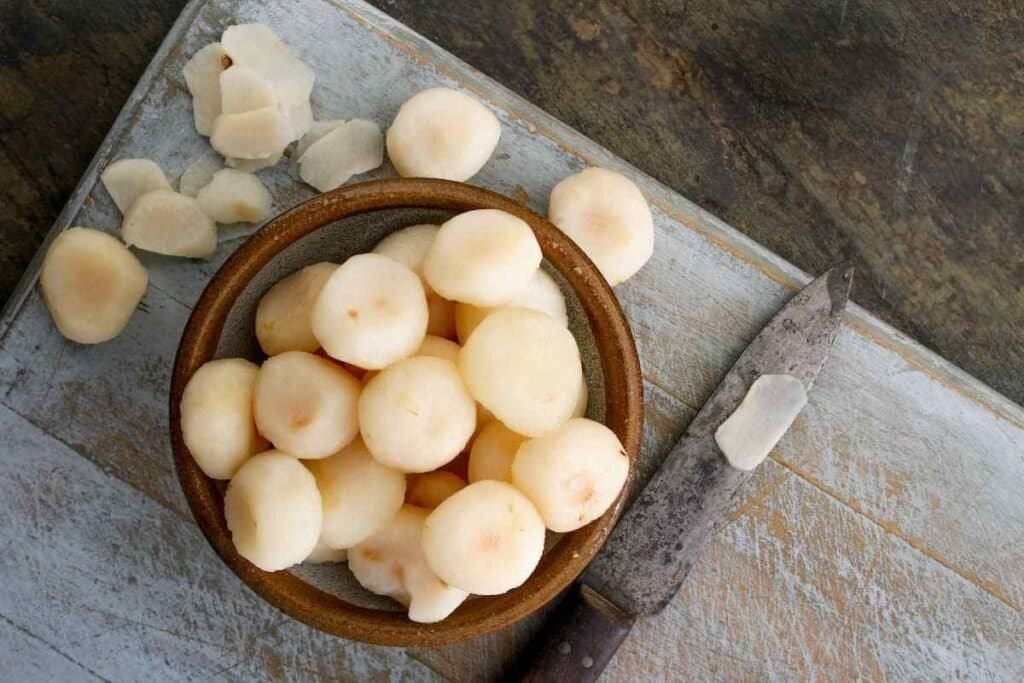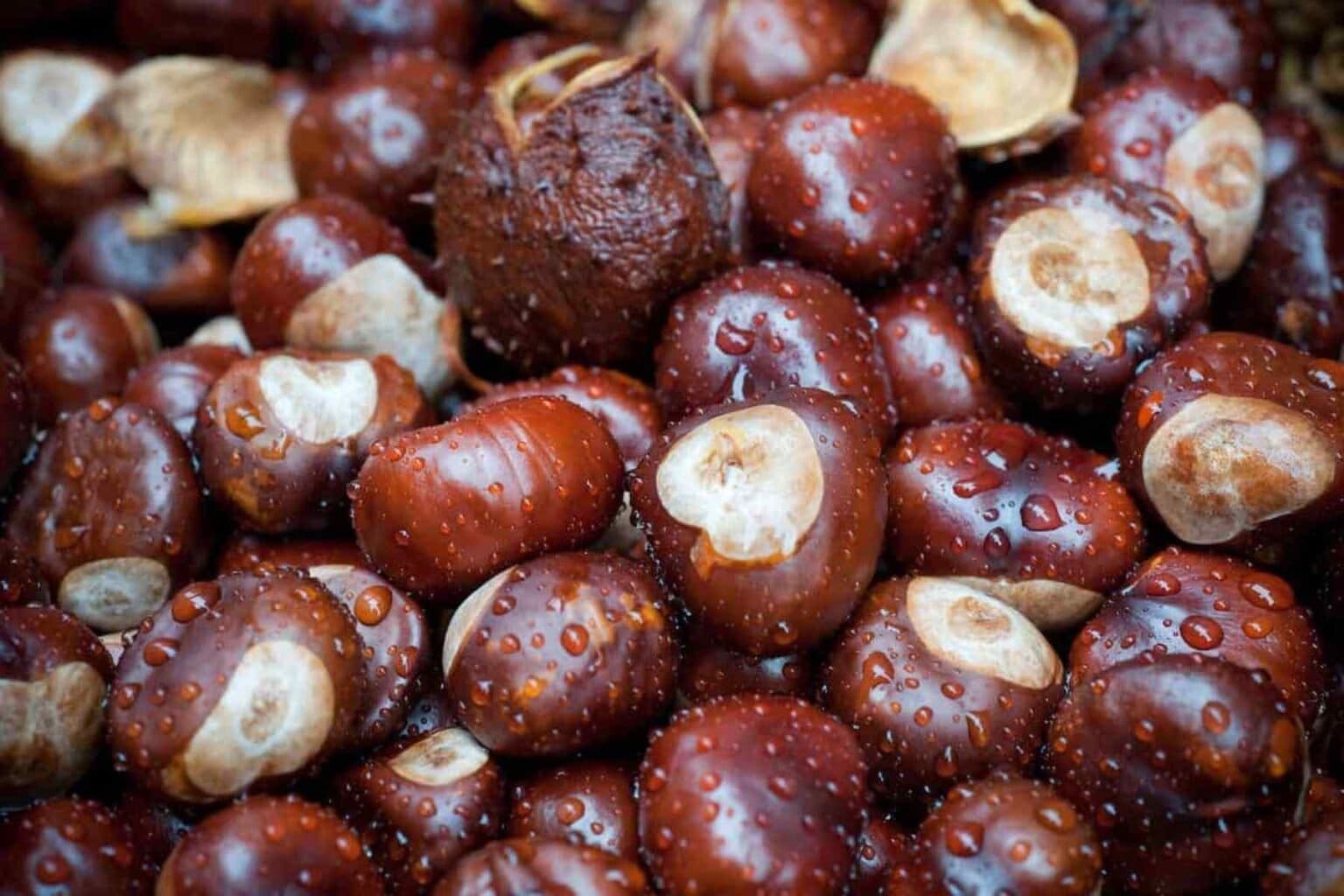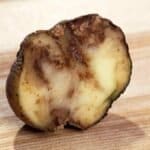I often find a surplus of water chestnuts in my pantry after whipping up a stir-fry. The thought of their crisp texture going to waste always bothered me.
It turns out that those leftover water chestnuts can be frozen! Simply drain them well, spread them on a baking sheet, and pop them in the freezer. Once frozen, transfer to an airtight container or freezer bag. They’ll keep their crunch for months, ready to add a delightful surprise to your next culinary creation.
But, as with all good things, there’s a trick to it, and timing is everything.
Why Freeze Canned Water Chestnuts?

Freezing canned water chestnuts offers convenience and practicality that can simplify your cooking.
When you freeze leftover water chestnuts, you prevent waste and ensure you always have some available for your next stir-fry or salad. No more watching unused water chestnuts go bad in the fridge!
Freezing allows you to confidently purchase larger cans, knowing any extra won’t spoil. This smart approach saves money over time.
With a frozen supply, you can enjoy these tasty morsels year-round, even when fresh ones aren’t in season.
Do Frozen Water Chestnuts Lose Their Crunch?

Water chestnuts retain their satisfying crunch when frozen correctly. Although freezing may cause a minimal change in texture, the difference is hardly noticeable. The key to preserving their crisp bite lies in using proper freezing and thawing methods.
When freezing, the process can result in a slight softening, but don’t worry – the signature snap you love will still be there.
To enjoy them at their best, allow the chestnuts to thaw gradually in the fridge. This gentle approach helps maintain their structure, ensuring each piece offers the gratifying crunch you expect.
The subtle softening serves as a marker of the chestnuts’ freezer journey, a testament to your smart preservation techniques. Relish the crisp texture that withstands the cold, a delightful surprise with every nibble.
Take comfort knowing you can savor your cherished water chestnuts’ crunch whenever the mood strikes, a reliable pleasure in your culinary adventures.
Step-by-Step Guide: How to Freeze Canned Water Chestnuts

Freezing canned water chestnuts is a simple process that allows you to enjoy their satisfying crunch whenever you want. Begin by draining the liquid completely from the can.
If you prefer a reduced sodium version, you can rinse them briefly, but this is optional. Use paper towels to dry the water chestnuts thoroughly, which helps prevent ice crystals from developing.
| Step | Instructions | Tips |
|---|---|---|
| 1 | Drain: Open the can and pour the water chestnuts into a colander. | Gently shake the colander to remove excess liquid. |
| 2 | Rinse: Run cold water over the chestnuts to remove any residual canning liquid. | This step helps remove excess salt and improves the flavor of the frozen chestnuts. |
| 3 | Dry: Pat the chestnuts gently with a paper towel. | Excess moisture can lead to ice crystals forming during freezing. |
| 4 | Spread: Arrange the chestnuts in a single layer on a baking sheet. | This prevents them from freezing together in a clump. |
| 5 | Freeze (Initial): Place the baking sheet in the freezer for 1-2 hours. | This flash freeze helps maintain their texture. |
| 6 | Package: Transfer the frozen chestnuts to an airtight container or freezer bag. | Squeeze out any excess air to prevent freezer burn. |
| 7 | Freeze (Final): Store in the freezer for up to 6 months. | Label the container with the date for easy tracking. |
Place the containers in the coldest section of your freezer, and you’re ready to go! You now have a supply of these deliciously crunchy tidbits prepared to enhance your recipes whenever you desire.
By freezing canned water chestnuts, you ensure that this distinctive ingredient is always available, making you feel like a clever, well-equipped home cook.
How Long Do Frozen Canned Water Chestnuts Last?

Frozen canned water chestnuts can be stored for 2-6 months for the best quality, maintaining their crisp texture and delicate flavor to enhance your favorite recipes.
You can freeze them longer, but the texture may soften gradually. Keep a steady freezer temperature and use airtight packaging to prevent freezer burn and maximize shelf life.
Tips:
- Try frozen water chestnuts in both sweet and savory dishes
- Enjoy the satisfying crunch they bring to stir-fries, salads, and stuffings
- Make memorable meals featuring this versatile ingredient to share with loved ones
How to Use Frozen Water Chestnuts

Frozen water chestnuts are simple to use in many tasty recipes. Most dishes allow you to add the frozen pieces right into bubbling stir-fries, rich soups, or flavorful sauces without thawing.
Their delightful crunch and mildly sweet taste will take your cooking to the next level.
If thawing is needed, you have choices. Put the closed package in the fridge overnight to let the icy nuggets slowly soften. Need them faster? Dunk the container in cold water to speed things up.
Get inventive with frozen water chestnuts! Cut them into thin discs to perk up fresh salads or dice them for a fun spin on classic spring rolls.
These adaptable morsels will be your favorite secret helper for quick family dinners or fancy spreads to impress. With frozen water chestnuts ready to go, you’ll make unforgettable meals that keep everyone wanting more.
What To Avoid When Freezing Water Chestnuts

- Freezing water chestnuts in liquid will result in a mushy, unappetizing texture. Drain them thoroughly before freezing.
- Not drying water chestnuts properly before freezing. Excess moisture will form ice crystals that ruin their crisp texture.
- Freezing damaged or soft water chestnuts. If they’re not in prime condition, freezing won’t improve them. Start with the best quality for optimal results.
- Overcrowding the freezer. Ensure water chestnuts have enough space to freeze evenly and maintain their desired texture.
- Treating water chestnuts carelessly during the freezing process. Proper techniques are essential to preserve their sweet, crisp essence for future use.
- Letting sloppy freezing methods diminish the enjoyment these delightful morsels can provide. Freeze with precision to be ready to impress whenever needed.



